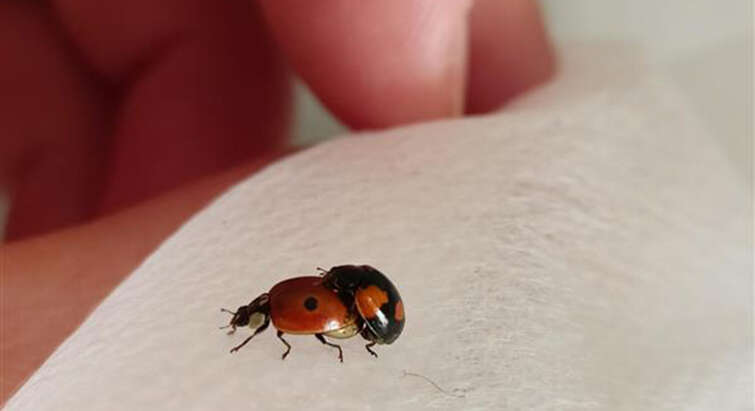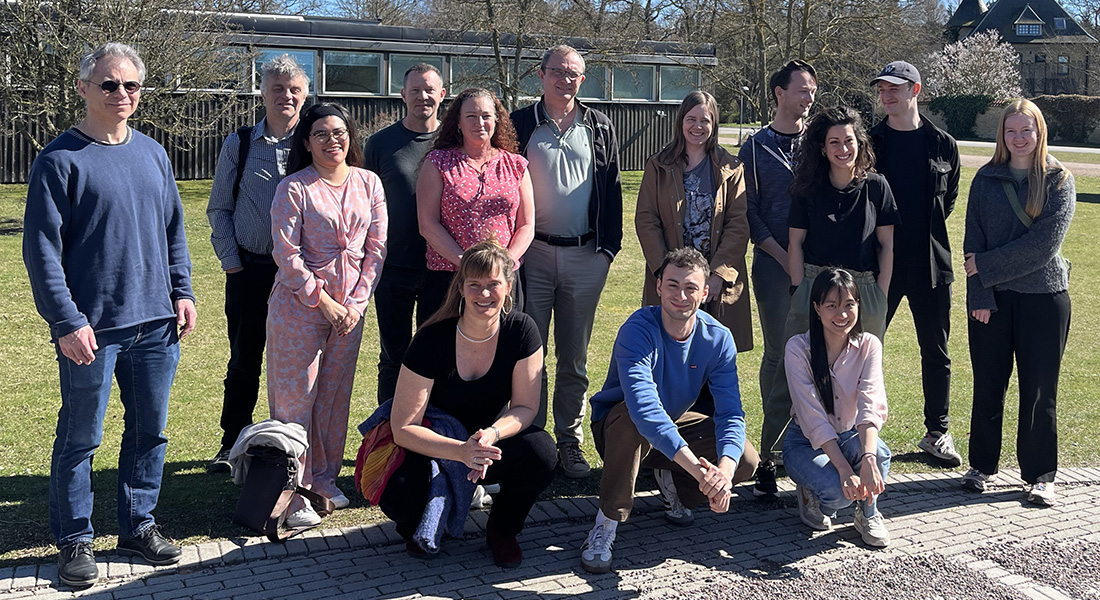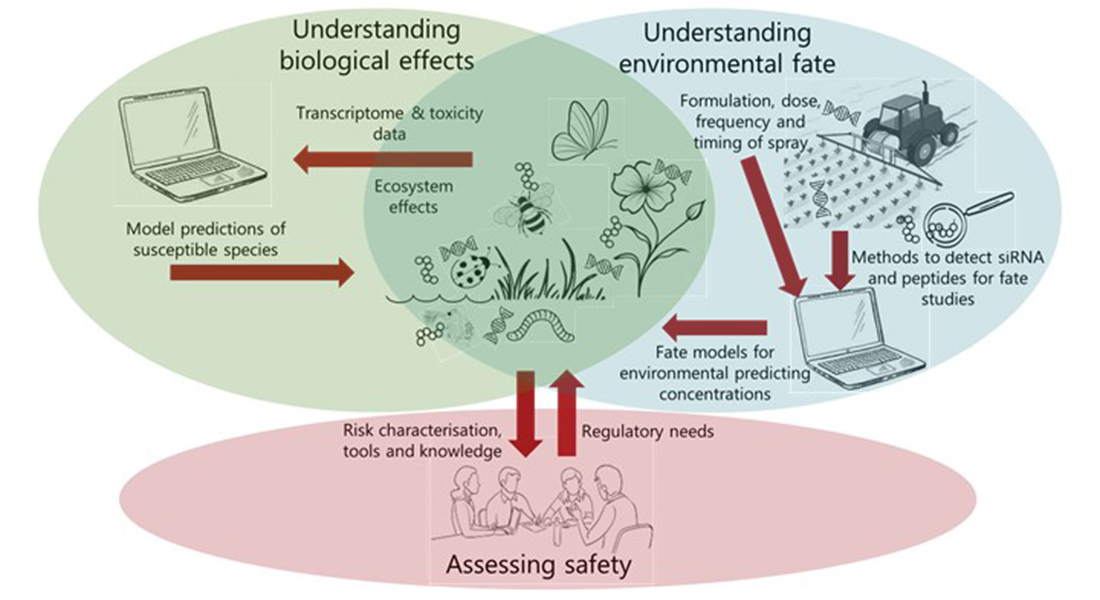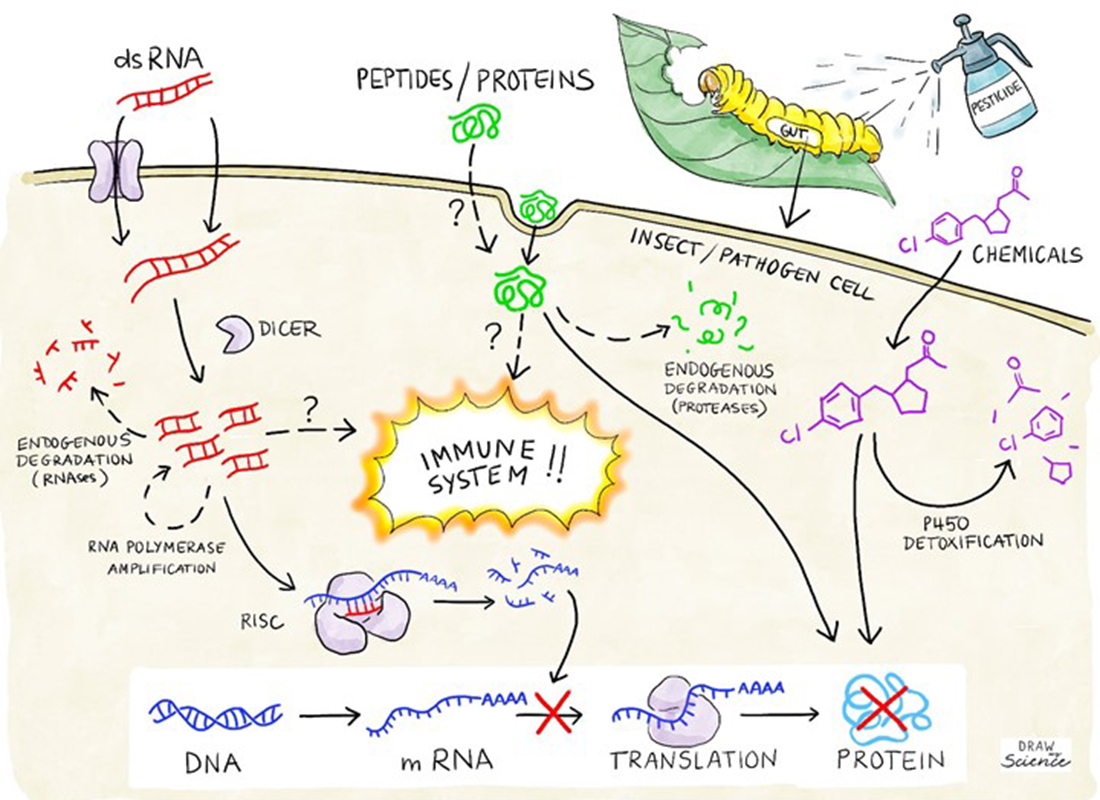
News article from Novo Nordisk, June 2024
Regarding ENSAFE and others

With global food demand expected to rise by 70% by 2050, securing crop yields while protecting the environment is more critical than ever. Traditional chemical pesticides help prevent crop losses but come with serious ecological concerns, including biodiversity loss and pest resistance.
The ENSAFE project is exploring innovative bio-based alternatives, such as RNA interference (RNAi) technology and bioactive peptides, which offer effective pest and disease control with minimal environmental impact. However, the EU currently lacks a dedicated regulatory framework to assess these innovations. ENSAFE aims to bridge this gap by developing a science-based environmental risk assessment framework, ensuring the safe and sustainable use of bio-based plant protection products.
The ENSAFE project is exploring innovative bio-based alternatives, such as RNA interference (RNAi) technology and bioactive peptides, which offer effective pest and disease control with minimal environmental impact. However, the EU currently lacks a dedicated regulatory framework to assess these innovations. ENSAFE aims to bridge this gap by developing a science-based environmental risk assessment framework, ensuring the safe and sustainable use of bio-based plant protection products.

The project aims to develop tools to understand biological effect and environmental fate of siRNA- and peptide-based Plant Protection Products (PPPs) as a basis to assess their risk and address how they can be regulated in a way that ensures environmental safety of the products. Biological effects will be addressed using both in silico models (WP1, hypothesis i) and biological tests on a wide range of aquatic and terrestrial non-target species and model ecosystems (WP2, hypothesis ii and iii). Fate will be addressed through new methodologies to reliably measure siRNA and peptide molecules in environmental matrices and parametrize and test existing fate models in model ecosystems (PW3, hypothesis iv). Regulatory needs and approaches used outside EU will be combined with the project knowledge to provide guidance towards a more efficient regulatory approach designed for siRNA- and peptide-based PPPs (WP4).

The above figure illustrates how Plant Protection Products (PPPs) based on dsRNA and peptides are different from the chemical PPPs on which the EU-legislation is based. Chemicals (purple) diffuse through cell membranes, are broken down fully or partly by detoxification enzymes (P450s), esterases, transferases) and/or bind to their molecular protein target (red cross on protein), which is usually an enzyme, transport channel or a signal receptor. Double stranded RNA (dsRNA shown in red), on the other hand, are large molecules and are either taken up through membrane channels or through endocytosis. When inside the cell, they are cut to smaller pieces creating small interfering RNA, siRNA. These can either be degraded by cellular RNAses, or in some species be multiplied by RNA-polymerases, or they are recognized by the RISK enzyme complex, which pairs them to matching messenger RNAs which are destroyed, thereby silencing the translation of that specific protein (red cross before mRNA translation). The peptides (green) are large as dsRNA and uptake therefore believed to be mainly through endocytosis, though other processes cannot be ruled out. Peptides are degraded by cellular proteases, or they bind to protein targets as chemicals do, thereby potentially disturbing similar biochemical pathways as do chemical PPPs. Both siRNA and peptides may thicker the immune system of cells, as both resemble invading foreign infections. The toxocokinetic processes are hypothesized to play a large role for variations in species sensitivity. The processes we will focus on in ENSAFE are given with broken arrows and question marks.
The overarching vision of the ENSAFE project is to support the development of environmentally safe biotechnological solutions for crop protection, contributing to global food security while reducing reliance on harmful chemical pesticides.
The ENSAFE project seeks to deliver tools and knowledge that will:
ENSAFE will develop a comprehensive scientific foundation and practical tools to evaluate the environmental safety of siRNA- and peptide-based PPPs. The project is structured around the following hypotheses:
This work package focuses on developing computational tools to predict potential target and off-target effects of siRNA and peptides. It involves constructing analysis pipelines for siRNA and peptides, assessing species sensitivity, and making these tools available as user-friendly webservers and stand-alone software.
Expected outcomes:
| The work package is led by Professor Jan Gorodkin Department of Veterinary and Animal Sciences (UCPH) |
 |
This package aims to understand the toxicity and species selectivity of siRNA and peptide-based PPPs in non-target organisms. It includes bioassay studies, toxicokinetics, and toxicodynamics to investigate the mechanisms underlying observed ecotoxicological effects and their impacts on physiology, immune function, and energy budgets.
Expected outcomes:
| The work package is led by Professor David Spurgeon UK Centre for Ecology and Hydrology |
 |
This work package studies the fate of siRNA and peptide-based PPPs in environmental samples. It focuses on developing methods to detect these compounds, understanding their degradation in environmental matrices, and assessing their persistence and transport in ecosystems.
Expected outcomes:
| The work package is led by Professor Jeppe Lund Nielsen Department of Chemistry and Bioscience (AAU) |
 |
This package collates regulatory-focused outcomes from the project and communicates them to stakeholders. It involves gathering global state-of-the-art documentation, developing guidance for regulatory use, and engaging with regulatory authorities to align outputs with regulatory needs.
Expected outcomes:
| The work package is led by Dr. Helen Hesketh UK Centre for Ecology and Hydrology |
 |
This work package focuses on training the next generation of researchers and engaging stakeholders. It includes incorporating knowledge into MSc courses, engaging MSc project students, training PhD students, providing courses for stakeholders, and conducting scientific outreach through publications and conferences.
Expected outcomes:
| The work package is led by Professor Nina Cedergreen Department of Plant and Environmental Sciences (UCPH) |
 |
| Nina Cedergreen contact@ensafe.dk + 45 35 33 33 97 |
 |

Novo Nordisk Foundation Challenge Grant no. NNF24OC0087112
Period: 01-01-2025 to 31-12-2030
| Name | Title | Phone | |
|---|---|---|---|
| Anthon, Christian | Systems Administrator | +4521510929 | |
| Cedergreen, Nina | Professor | +4535333397 | |
| Favaro, Lorenzo | PhD Student | +4535327399 | |
| Gorodkin, Jan | Professor | +4523375667 | |
| Molina Zamudio, Kitzia Yashvelt | PhD Fellow | +4535337918 | |
| Nardelli, Martina | PhD Fellow | +4535328290 | |
| Ovesen, Puk | Special Consultant | +4535332527 | |
| Tran, Nguyen Ngoc Vi | PhD Fellow | +4535331815 |
| Name | Title | Phone | |
|---|---|---|---|
| Eskildsen, Mathias | Ph.d.-stipendiat | - | |
| Extabe, Amaia Green | Dr. | - | |
| Hesketh, Helen | Dr. | +44(0)1491692574 | |
| Humphreys, Megan | - | ||
| Jojan, Saniya | PhD Fellow | ||
| Kille, Pete | Professor | - | |
| Matthews, Yasmin | Senior Executive Assistant | - | |
| Nielsen, Jeppe Lund | Professor | +4599408506 | |
| Nielsen, Lærke Valsted Bak | PhD Fellow | - | |
| Sizmur, Tom | Professor | +44(0)1183788913 | |
| Spurgeon, Dave | Professor | +44(0)1491692208 |